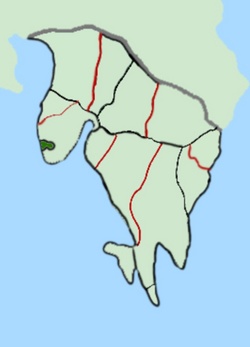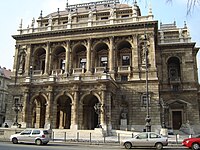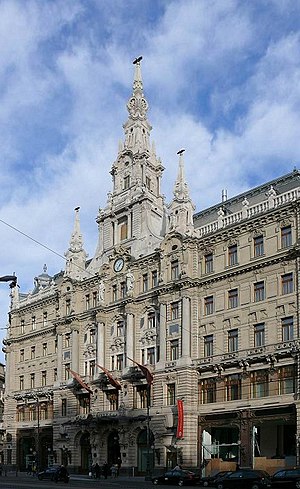Hafnir
Hafnir | |
|---|---|
Capital (legislative) | |
 | |
| Municipality | Hafnir Special Autonomous municipality |
| Area | |
| • Total | 283 km2 (109 sq mi) |
| • Water | 2 km2 (0.8 sq mi) |
| Population (2020) | |
| • Total | 387,456 |
| • Density | 1,400/km2 (3,500/sq mi) |
| Demonym(s) | Reykan |
Hafnir is the Capital and largest city of Reykanes. Located in South West Reykanes on the Vifilsstadavatn river . It lies on the Rifstangi peninsula between the sea and the Kjolur mountain range but it is not a coastal city even if its greater area extends to the coast. Hafnir is one of Reykanes's two capital cities. Serving as the seat of the legislative branch of the government, and as the host to all foreign embassies to Reykanes. Judicial system is also done here. It is the most Northern and the only city in Reykanes over 300,000 population making it the smallest capital city in the World. It is a major economical and cultural center in Reykanes for being the only capitol for centuries. The Parliament of Reykanes is contained within the city's metropolitan area. The city has a subpolar oceanic climate.
Hafnir was established in 114 BC as a City state until it was integrated in to the Kingdom of Reykanes. It takes its name from two large 2nd century farms Sandhöfn and Kirkjuhöfn which are museums today.
Contents
Etymology
The word Hafnir means harbor or port.
History
Administration
Geography
Architecture
Hafnir has architecturally noteworthy buildings in a wide range of styles and from distinct time periods, from the ancient times to the most modern Palace of Arts, the contemporary arts museum and concert hall.
Most buildings in Hafnir are relatively low: in the early 2010s there were around 100 buildings higher than 45 metres (148 ft). The number of high-rise buildings is kept low by building legislation, which is aimed at preserving the historic cityscape and to meet the requirements of the World Heritage Site. Strong rules apply to the planning, authorisation and construction of high-rise buildings and consequently much of the inner city does not have any but there are Business Parks outside the city centre that have skyscrapers.
The first determinative style is the Gothic architecture in Hafnir. The few remaining Gothic buildings can be found in the Palace Hill, which dates back to the 14th century. Other buildings with Gothic features are the Inner City Parish Church, built in the 14th century,and the Mary Magdalene Church, completed in the 15th century. The most characteristic Gothic-style buildings are actually Neo-Gothic, that came back in to fashion during the late 18th century, an example is the Nerfoy Courtyard, built in the early 20th century.
After 1600s, the Baroque architecture designated the dominant style of art in Reykanes till early 19th century. Symmetry and regularity were primary concerns, often enhanced by a projecting central section on the main façade. Many streets were and still are lined by brightly coloured townhouses built with wood, bricks, and plaster and eventually stone.
Chalet style became a prevailing influence in Reykani architecture as many timber buildings were constructed in this way.
The Classical architecture and Neoclassical architecture are the next in the timeline that dominated during the 19th and early 20th century with Romantic and Neo-Renaissance architecture becoming popular in the 1880s as well. Art Nouveau came into fashion in Hafnir by the exhibitions which were held in and around 1890s. Art Nouveau is a blend of several architectural styles. Prime example for Neoclassical is the National Museum.
The second half of the 20th century also saw, under the communist regime, the construction of blocks of flats.
The Castle Hill District is located in the heart of the capital, in the 1st district. The Castle Hill district is one of the main cultural and tourist centers of Hafnir. The TBD Palace, also known as the former royal palace, is part of it and one of its most significant buildings. The complex was built from the 1200s and underwent continuous expansions until the 19th century, so you can find both Renaissance, Baroque and Neo-Baroque style features. The palace was the seat of the Reykani rulers. From there you can enjoy a great view of Hafnir, the residence of the president of the republic and the top station of the Red Terror Square Funicular.
Fjallvegur is the longest boulevard in Hafnir at 1,810 meters long, which is part of the III. district. One section of the avenue is the section between Sólartorg and Parliament. This part of the road is lined with closed rows of three- to four-story apartment buildings, on the ground floor of which there are elegant cafes and shops. The second section of Fjallvegur is the section between TBD and TBD. The number of floors of the buildings decreases and they become more like rows of trees. The third section is the section between TBD and Eyrartorg. The stretch of road is lined with palaces and villas, several embassies are based here. On Fjallvegur and its surroundings, there are buildings such as the State Opera House, the former Ballet Institute, the Bostonia Fashion Hall and café, the Academy of Music, the Art Gallery, as well as several museums, such as the House of Terror Museum, the Postal Museum, and the "Broadway in Hafnir". A section of the Hafnir metro line runs under the boulevard. Nowadays, it is the most important as a busy traffic route, but thanks to its shops and cafes, it is also popular as a walking route. Among its famous buildings, the most significant are the Hafnir Palace, the Leikhús Eldborgar Theater and the former Royal Hotel, which is now a luxury hotel under the name Corinthia Grand Hotel Royal.
Transport in Hafnir
Hafnir is the biggest transport hub in the country. It has a developed transport network. The local transport services are controlled by the local government such as the Hafnir Metro, Buses but the rail services are controlled by the TEJ like the suburban railways and trams. It also hosts one of the international airports, which is the biggest and main airport in Reykanes. Long-distance rail lines connect Hafnir with all of the major cities of Reykanes and with the most rural areas in the country.
Public transport users can use basic tickets or the contactless card known as Samgöngupassi (Transit Pass) and the mobile version of the Samgöngupassi, which today is the most popular, it also notifies the user of any delay or news of the public transportation.
| System | Stations / Lines / Net length | Annual ridership |
|---|---|---|
| Hafnir Suburban Rail | TBD / TBD / [convert: invalid number] | TBD (2016) |
| Hafnir Metro | 8 / 1 / 9.8 km (6.1 mi) | 26,827,500 (2017) |
| Hafnir Trams | TBD / TBD / [convert: invalid number] | TBD (2017) |
| Hafnir Buses | TBD / 16 / [convert: invalid number] | TBD (2017) |
Travelers can access all modes of transport with a single ticket.
Road
Per capita car ownership in Reykanes is roughly 633 vehicles per 1,000, though Hafnir is not severely affected by congestion, however the local government makes the effort to lower the numbers, established multiple car free zones and promoting the use of electric cars, , as 23% of all registered cars in the municipality are fully electric. Most major multi lane roads run through downtown and the most populated areas. The two major motorways in Reykanes, Þjóðvegur 1 and Þjóðvegur 2 connect in Hafnir.
Aviation
Cycling
Rail
Hafnir Metro
railways
Bus
Bus transport in Hafnir is the biggest public transportation in the city with 200 buses in their fleet.
Education
Culture
Gallery of Hafnir
| Rank | Municipalities | Pop. | |||||||
|---|---|---|---|---|---|---|---|---|---|
 Hafnir |
1 | Hafnir | Hafnir | 387,456 | |||||
| 2 | Cape Nátfari | Cape Nátfari | 80,157 | ||||||
| 3 | Laugleós | Norðurhöfði | 51,907 | ||||||
| 4 | kaupmannahöfn | Vesturhöfði | 49,291 | ||||||
| 5 | Port Sturla | Natal | 41,082 | ||||||
| 6 | Höfn | Kvuarry | 40,748 | ||||||
| 7 | fálki | Vesturhöfði | 38,108 | ||||||
| 8 | Ingólfr | Skutustadhir | 35,028 | ||||||
| 9 | Vallanes | Borgarfjörður | 33,684 | ||||||
| 10 | Nýjasavotta | Faxaflói | 30,273 | ||||||







